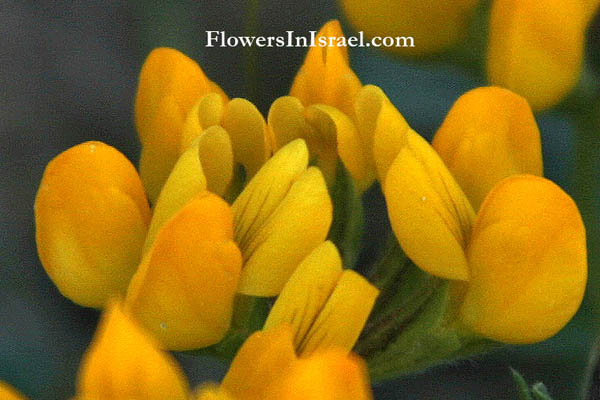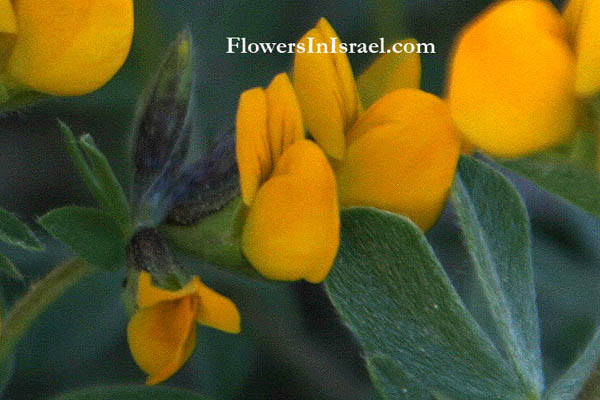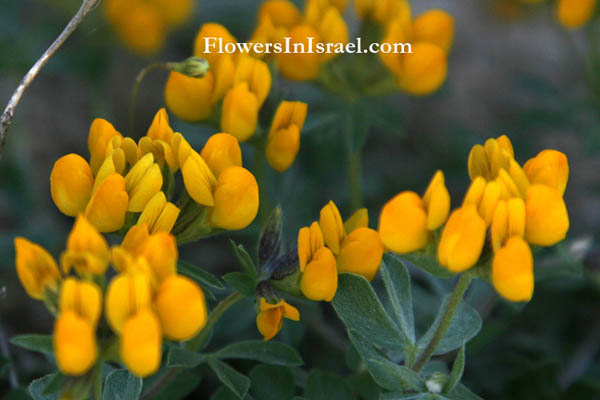Greater bird's foot trefoil,
Hebrew: לוטוס שעיר, Arabic: الحربث ، رجل العصفور، قرن الغزال
| Scientific name: | Lotus halophilus Boiss.et Spruner | |
| Synonym name: | Lotus villosus Forssk. | |
| Common name: | Greater bird's foot trefoil | |
| Hebrew name: | לוטוס שעיר | |
| Arabic name: | الحربث ، رجل العصفور، قرن الغزال | |
| Family: | Papilionaceae, פרפרניים |

|
| Life form: | Annual | |
| Stems: | 10-30 cm high; pubescent | |
| Leaves: | Alternate, imparipinnate (pinnately compound leaves in which there is a lone terminal leaflet rather than a terminal pair of leaflets), sessile or shortly petiolate; oblong-obovate | |
| Inflorescence: | Heads 1- to 9-flowered | |
| Flowers: | Yellow; peduncles longer than leaves; lateral calyx-teeth slightly shorter than upper | |
| Fruits / pods: | Legume, ellipsoid body; curved at apex | |
| Flowering Period: | February, March, April, May | |
| Habitat: | Sand | |
| Distribution: | Mediterranean Woodlands and Shrublands, Semi-steppe shrublands, Shrub-steppes, Deserts and extreme deserts | |
| Chorotype: | Mediterranean | |
| Summer shedding: | Ephemeral |

Derivation of the botanical name: Lotus, the classical Greek name. halophilus, Greek hals, sea, salty; phileo, to love; salt-loving. villosus, shaggy, hairy.

|